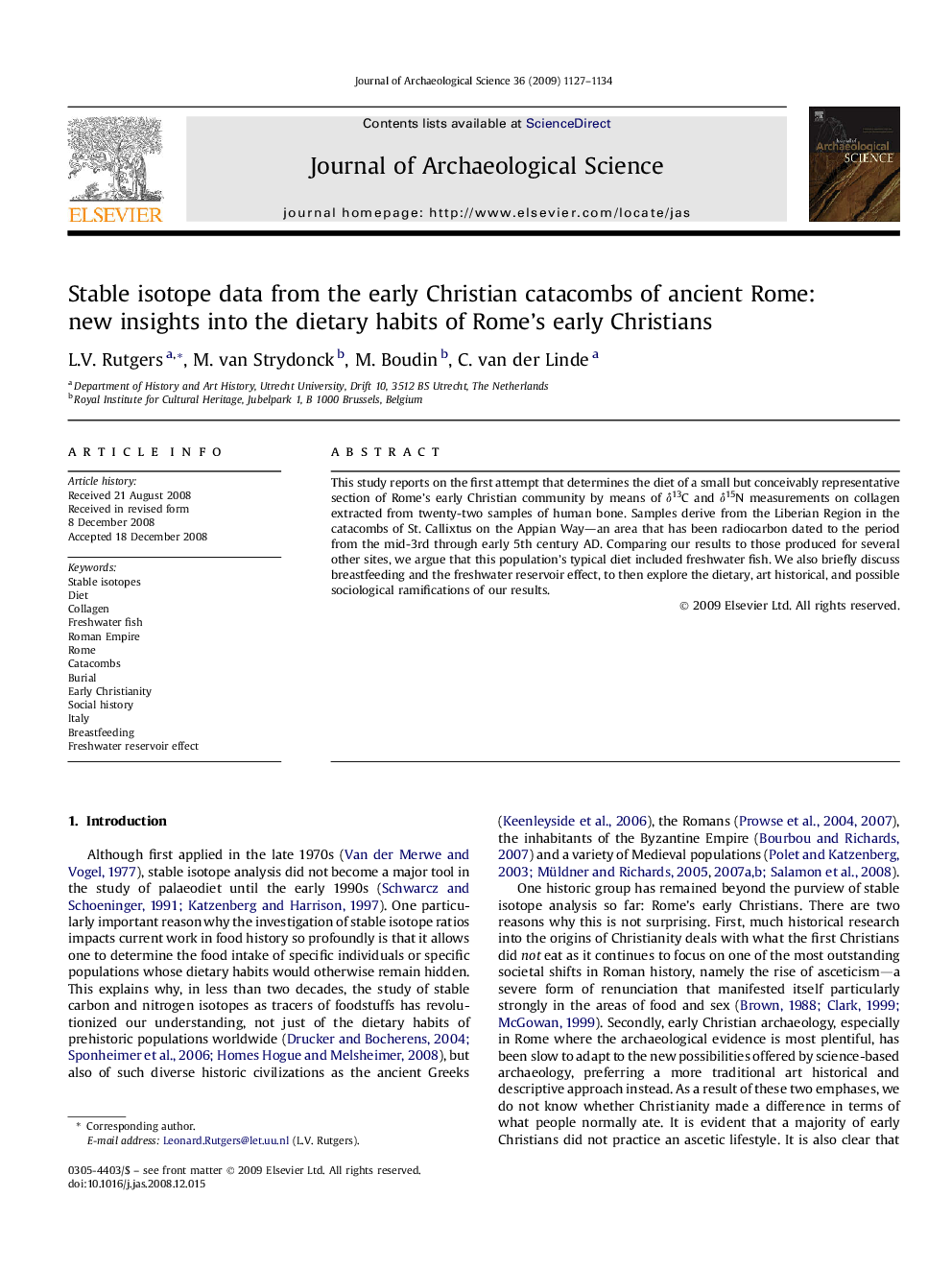| Article ID | Journal | Published Year | Pages | File Type |
|---|---|---|---|---|
| 1037143 | Journal of Archaeological Science | 2009 | 8 Pages |
This study reports on the first attempt that determines the diet of a small but conceivably representative section of Rome's early Christian community by means of δ13C and δ15N measurements on collagen extracted from twenty-two samples of human bone. Samples derive from the Liberian Region in the catacombs of St. Callixtus on the Appian Way—an area that has been radiocarbon dated to the period from the mid-3rd through early 5th century AD. Comparing our results to those produced for several other sites, we argue that this population's typical diet included freshwater fish. We also briefly discuss breastfeeding and the freshwater reservoir effect, to then explore the dietary, art historical, and possible sociological ramifications of our results.
